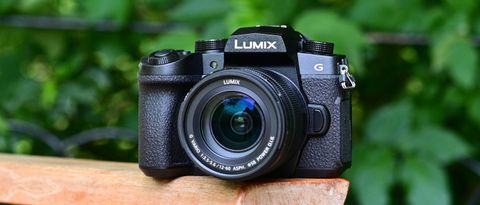Why you can trust TechRadar
Performance
The Lumix G95 starts up with minimal delay and is ready to begin shooting pretty much as soon as you are. There's no sluggishness as you move around the menus or adjust exposure settings, and the camera responds as nimbly as you'd expect.
With a fast UHS-II card in place, our tests showed the camera to maintain its maximum burst rate for 30 consecutive raw + JPEG frames, and 39 raw frames on their own – so, slightly less than the 45 quoted by Panasonic. JPEGs can be captured for as long as required, and are written immediately to the card; while raw files understandably take longer, the camera remains operational during this time, which isn't something every camera-maker can claim.
The LCD screen feels solidly mounted to the body and pulls away without any issue, and the fact that it spins all the way around to face the front is great for video users who want to record themselves. It's also nicely responsive to touch, which makes setting the focusing point or adjusting menu options effortless, and its clarity and reproduction of the scene are as expected at this level, which is to say very good.
The electronic viewfinder has a very useful 0.74x magnification and with 2.36 million dots it presents the scene with good clarity.
The 20MP sensor, which we've seen before inside the G9, produces nicely detailed images, partly because of its lack of an optical low-pass filter. Very slight noise can be seen in low-ISO images, but then this is also true of many APS-C based cameras; the key thing is that this is controlled well as you rack up the ISO, with noise reduction doing its thing, but not too aggressively.
























The kit lens most buyers will end up using is the LUMIX G VARIO 12-60mm f/3.5-5.6 ASPH. POWER O.I.S, and what's particularly useful for those who have no other Micro Four Thirds optics is that it has a slightly broader focal range than is the norm for kit lenses, and manages to stay relatively compact at the same time.
With default settings, you generally get pleasing results and well-balanced exposures. Highlights can roll off a little too easily, although this can easily be compensated when processing raw files.
As mentioned, there are many Photo Styles to call upon, although the Standard option will be the default for most people. It is a perfectly fine all-rounder, with nicely vibrant greens and good reds, although blue skies can lack punch, so in scenes, with skies and foliage, it's worth switching to the Vivid option, which provides excellent saturation all round whole keeping things realistic.
Video footage from the G95 is stable, with excellent detail when you shoot in 4K. The stabilization system does well to keep things steady, which makes it easy to maintain the same composition when shooting handheld too. Some rolling shutter can be seen when the camera is panned, although you can avoid the worst of this by moving it a little more slowly.
The camera's autofocus system does well to move smoothly between different subjects in the scene, and this is particularly effective when you use the touchscreen to set different points of focus. There's typically a very slight hesitant bump as the focus is confirmed, which is more noticeable when you're focusing between subjects at different distances and is likely a consequence of the contrast-detect AF system.
Panasonic hasn't made any significant changes to the G95's autofocus system over the previous generation. It's still based on the contrast-detect AF principle, and it always makes use of Depth From Defocus (DFD) technology, which compares two images with different depths of field to quickly drive the system to where it needs to be, although this is said to have been tweaked for the new model.
Panasonic's previous models have had very speedy autofocusing systems, and the G95's appears to be just as sprightly. Even when lighting conditions aren't great, the camera is capable of focusing almost as soon as you've half-pressed your finger on the shutter-release button, regardless of where the focusing point is in the frame.
Verdict
The G85 was a camera we prized for its comprehensive feature set, excellent performance, and sound output, and with only a handful of changes here, the experience is just as positive.
Panasonic Lumix G95 feels very nicely put together, handles well, and it's pleasingly responsive throughout its operation. Image and video quality are generally sound too, and the fact that the camera has sensor-based stabilization arguably gives it an advantage over its rivals that rely on this.
On the other hand, the 20MP sensor, while a step up from the G85, doesn't look particularly competitive when you consider the 24MP and 26MP APS-C types used in rivals.
Cost is perhaps the main issue here: particularly with a lens, the G95 isn't a cheap camera, and it seems a little too highly-priced when you consider the changes made. It's a very good camera in isolation, but those not tied to any system may well be swayed by what the competition offers.
- Siddharth Chauhan is the Consumer Technology Reporter at Digit India. He used to work as an Assistant Editor at TechRadar India

